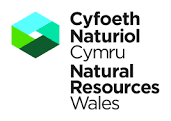
Decay Detection & Aerial Inspection
Decay Detection & Aerial Inspection
Like all living things, trees are susceptible to disease. A tree needs a good supply of light, water, carbon dioxide and nutrients from the environment for optimum growth. Many diseases can affect trees which may be severe enough to compromise their biomechanical safety. In this respect, we’re primarily concerned with fungi and the processes of wood decay. Decay may be defined as the gradual degradation of wood that occurs as fungi release enzymes from their feeding hyphae, digest and absorb the components of wood. Depending on which components are digested, and in which order, the decay may produce a white rot, a simultaneous white rot, a soft rot of Types I or II, or a brown rot. The relationship between tree species, fungus species, mode of decay, location of the infection within the tree, and location of the tree itself, determines the overall biomechanical consequences.

Assessment Using Hand Tools
This is an integral part of the Visual Tree Assessment process and is carried out during the inspection of all trees. Observation of visual clues to the presence of decay (including tree morphology, changes in bark appearance, cavities and cracks) followed by careful use of a sounding mallet, long metal probe and tape measure can yield a lot of information helpful to a decay assessment. This is also a vital investigation prior to the use of more scientific approaches. The technique can be extended to produce quite detailed decay maps, particularly where a number of features combine or coalesce to produce an overall decay complex.

Picus 3 sonic tomography
The Picus3 sonic tomograph employs sound waves to visualise a ‘slice’ through the tree or limb. The technique uses the apparent velocity of sound in order to determine the quality of the wood: in basic terms, sound is fastest in good quality wood and slowest in decayed wood. By making precise measurements of the distance between measuring points and of the time elapsed between sound being transmitted and received, the software can calculate a ‘map’ of wood quality represented in colour. The tomograph is a highly sophisticated scientific instrument and correct interpretation of the results requires an in-depth knowledge of the technique and of the analysis process. A number of providers offer a ‘slice for a price’ service, producing the tomogram and passing the responsibility for analysis back to the client, this is highly inappropriate as a high level of knowledge is required to correctly interpret the ‘scan’.
Tomography carried out by Wilson Tree Surveys is based on high level training, extensive experience and in-depth knowledge. All our tomography reports include a discussion of the data, the analysis techniques used, an interpretation and a final recommendation.
Richard Wilson explains the operation of the Picus3 sonic tomograph.
Click here…

Microdrill Resistography
Resistography is a complementary technique in which the resistance encountered by a turning 3mm diameter, 500mm long microdrill bit is measured as an indication of wood quality. Resistography traces can demonstrate exquisite detail: even individual rings of wood can be identified and sometimes counted to indicate tree age!
In general terms though, good quality wood produces high resistance while decayed wood produces low or nil resistance. The technique can be considered ‘invasive’ but studies have shown that trees are not adversely affected by the technique to a significant degree. Resistography can be carried out in locations not readily accessible to tomography, including investigations of the root plate.

Aerial Inspection
Aerial inspection used to mean a climbing inspection by rope-and-harness but now includes the use of hydraulic platforms (Mobile Elevated Work Platforms (MEWPs); ‘cherry-pickers’) and drone technology, all of which are offered by Wilson Tree Surveys. The three technologies described above can all be used in the aerial arena although certain compromises have to be employed with sonic tomography and so resistography is the preferred option. Aerial inspection can be an important component of safety assessments where early identification of certain defects requires observation from above, for example in the case of Massaria Disease of Plane (Splanchnonema platani).





Let's Talk Today
We would love to hear from you, please get in touch if we can help or you would like to hear more about our services.
What our Clients say
It's extremely important to us that our Clients are 100% satisfied with all work that we carry out, here is just some of the feedback that we have collated from our client portfolio...
Your sonic tomography assessment of the beech tree was very accurate and your recommendations clearly justified. I wouldn’t have any hesitation in recommending you to other town, parish and community councils. Your service was outstanding and we’re still reaping the benefits.